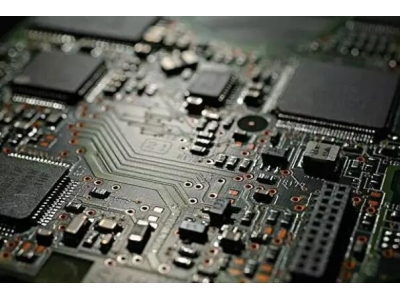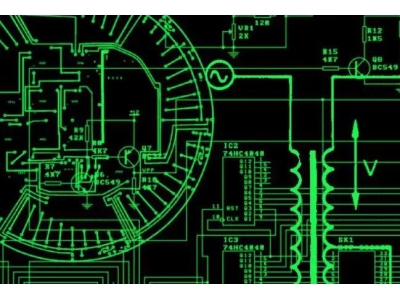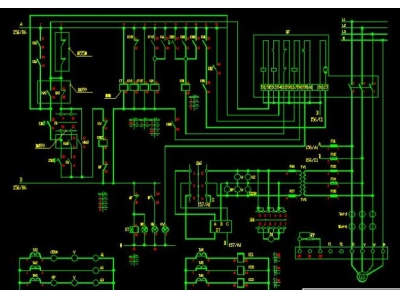bt134可控硅原理?
一、bt134可控硅原理?
1、当电源通过变压器初级线圈时,在次级线圈感应产生电压降,使次级电流增大,该电流经整流后得到较大直流电供给晶闸管。
2、晶闸管导通后便有触发脉冲形成,它控制着可控硅的开通和关断时间。
3、当负载需要加正向电压时:
可施加正触发信号给可控硅电路中的门极驱动三极管vt工作;相反地若要减小负载的负向电压则应施以负触发信号给可控硅电路中的门极驱动三极管vd工作。这样便可调节输出交流电的脉宽而实现无触点开关的功能。
4、由于晶闸管的导通角为0°~180°,所以无论何种形式的负载都可以接在其两端使用而不必考虑它们之间的相位关系问题.另外因为其具有较大的反向耐压能力,所以即使流过它的电流为零也可继续维持其导通状态.
二、bt134可控硅引脚参数?
T1主端子,T2主端子,G触发极。断态重复峰值电压600V/800v,通态均方根电4A,通态不重复浪涌电流25A,门极峰值2A,功率5W,工作温度负40~正120℃。
三、如何测量bt134管的好坏?
1、用指针式万用表电阻X1档,黑笔接T2(2脚),红笔接T1(1脚),万用表指针不动(阻值无穷大)。如果万用表指针不在阻值无穷大位置,这该可控硅是坏的。
2、在保持表笔和这两个引脚不断开的前提下,滑动黑笔和BT136的3脚(G)接触,万用表指针大幅右摆(阻值大幅减小)。如果万用表指针不动,则这该可控硅的触发极(G)是断路的。
3、在前面步骤2的基础上,滑动黑笔和BT136的3脚(G)断开,如果万用表指针保持不动或左摆一点点,则可以判断该BT136正向触发导通正常的。如果万用表指针回到无穷大位置,则有可能该可控硅坏了,但这个判断并不是绝对正确的。
4、因BT136是双向可控硅,所以对调红黑表笔,重复上面1~3的步骤,如果现象一样,则可以判断该BT136反向触发导通也是正常的。记住,不要用数字万用表通过上面的步骤来判断可控硅好坏,因为数字万用表电阻档的输出电流不足以维系触发后的可控硅保持导通。指针式万用表的电阻档能输出的短路电流最好大于100mA。
四、bt134与bt136的区别?
bt136双向可控硅的参数高于b t134可控硅,理论上不可以互换,但如果到具体的电路中就要看负载的情况了,如果134都可足够对付的话,用136就更不是问题了。
五、bt134三极管用什么代?
bt134三极管可以用BTA16代换,但bt134不是三极管,而是很常用的可控硅。
六、电路图?
画电路图需要先找好图形绘制工具 与工具相结合 能更快 更好的提高工作效率 不耽误时间 现在市场上的亿图图示功能很强大 操作简单
七、bt134三极管用什么代替?
bt134三极管可以用BTA16代换,但bt134不是三极管,而是很常用的可控硅。
三极管,全称应为半导体三极管,也称双极型晶体管、晶体三极管,是一种控制电流的半导体器件其作用是把微弱信号放大成幅度值较大的电信号, 也用作无触点开关。晶体三极管,是半导体基本元器件之一,具有电流放大作用,是电子电路的核心元件。
三极管是在一块半导体基片上制作两个相距很近的PN结,两个PN结把整块半导体分成三部分,中间部分是基区,两侧部分是发射区和集电区,排列方式有PNP和NPN两种。
电子三极管 Triode 这个是英汉字典里面“三极管”这个词汇的唯一英文翻译,这是和电子三极管最早出现有关系的,所以先入为主,也是真正意义上的三极管这个词最初所指的物品。
其余的那些被中文里叫做三极管的东西,实际翻译的时候是绝对不可以翻译成Triode的,否则就麻烦大咯,严谨地说,在英文里面根本就没有三个脚的管子这样一个词汇。
八、bt136与bt134区别?
bt136双向可控硅的参数高于b t134可控硅,理论上不可以互换,但如果到具体的电路中就要看负载的情况了,如果134都可足够对付的话,用136就更不是问题了。
九、bt134可控硅管如何判断好坏?
bt134可控硅管判断好坏如下:
用万用表判断时首先将万用表的两只表笔接在可控硅的两个端面,此时电阻应该呈无穷大(表针基本不动),然后再将万用表表笔反过来亦如此。如果这两步在测量时的电阻很小,那么就说明这只可控硅已经损坏了。
十、探照灯电路图
探照灯电路图: 理解、构建和优化探照灯
探照灯是一种广泛应用于舞台演出、户外照明和应急照明等领域的强光照明设备。在探照灯的核心部件之一是它的电路板,负责控制和供电。本文将带您深入了解探照灯电路图的构建和优化,帮助您了解探照灯的工作原理,并提供指导以构建高效可靠的探照灯。
了解探照灯电路图
探照灯电路图通常包括多个关键组件,如电源模块、控制模块、光源模块等。通过仔细研究电路图,您可以了解到这些组件之间的连接方式和信号传输原理。
在电路图中,常见的连接方式包括并联和串联。并联的组件同时接收相同的电压,但电流被分流到各个组件;串联的组件则依次接收电压,电流在各个元件之间相等。
此外,探照灯电路图中的控制模块通常包括变阻器、电位器和开关等元件,用于调节和控制亮度、色温等参数。
构建探照灯电路图
构建探照灯电路图需要具备一定的电子电路基础知识。以下是构建探照灯电路图的基本步骤:
- 确定探照灯的功率需求和光照要求。
- 选择合适的电源模块,确保其输出电压和电流满足探照灯的需求。
- 设计控制模块,包括亮度调节、开关控制和保护电路。
- 选择合适的光源模块,如LED光源。
- 根据电路图进行元件的连接和布局。
- 进行电路测试和参数调整,确保探照灯的性能符合要求。
优化探照灯电路图
优化探照灯电路图可以提高探照灯的性能和稳定性,延长其使用寿命。以下是一些优化措施:
- 选择高效能源: 选择高效的电源模块,以减少能量损耗和发热。
- 合理布局: 在电路板上合理布局组件,减少信号干扰和高温区域。
- 保护电路设计: 添加过流保护、过压保护和短路保护等保护电路,提高探照灯的安全性。
- 使用优质材料: 选择优质元件和材料,降低故障率和损耗。
- 热管理: 针对高功率探照灯,设计风扇散热模块,保持其正常工作温度。
结论
探照灯电路图是构建和优化探照灯的重要参考。通过深入了解电路图,您可以更好地理解探照灯的工作原理,并根据需求构建高效可靠的探照灯。优化探照灯电路图可以提高探照灯的性能和稳定性,延长其使用寿命。希望本文对您进一步了解和构建探照灯有所帮助。
Translated text in English: htmlFlashlight Circuit Diagram: Understanding, Building, and Optimizing Flashlights
A flashlight is a powerful lighting device widely used in stage performances, outdoor lighting, and emergency illumination. One of the key components of a flashlight is its circuit board, which is responsible for control and power supply. This article will take you through the understanding, building, and optimization of flashlight circuit diagrams, helping you grasp the working principles and provide guidance for constructing efficient and reliable flashlights.
Understanding Flashlight Circuit Diagrams
A flashlight circuit diagram typically consists of several essential components such as power modules, control modules, and light source modules. By studying the circuit diagram closely, you can understand how these components are connected and the principles of signal transmission.
In circuit diagrams, common connection methods include parallel and series connections. In parallel, the components receive the same voltage simultaneously, but the current is divided between them. In series, the components receive the voltage sequentially, and the current is equal between the elements.
In addition, the control module in the flashlight circuit diagram often includes components such as variable resistors, potentiometers, and switches to regulate and control brightness, color temperature, and other parameters.
Building Flashlight Circuit Diagrams
Building a flashlight circuit diagram requires a certain level of knowledge in electronic circuits. The following are the basic steps for constructing a flashlight circuit diagram:
- Determine the power requirements and lighting needs of the flashlight.
- Select a suitable power module to ensure its output voltage and current meet the requirements of the flashlight.
- Design the control module, including brightness adjustment, switch control, and protection circuits.
- Select a suitable light source module, such as LED light sources.
- Connect and layout the components according to the circuit diagram.
- Conduct circuit testing and parameter adjustment to ensure the flashlight's performance meets the requirements.
Optimizing Flashlight Circuit Diagrams
Optimizing flashlight circuit diagrams can improve the performance, stability, and longevity of flashlights. Here are some optimization measures:
- Choose efficient power sources: Select high-efficiency power modules to reduce energy loss and heat generation.
- Proper layout: Arrange components on the circuit board in a manner that reduces signal interference and high-temperature areas.
- Protection circuit design: Add protection circuits such as overcurrent protection, overvoltage protection, and short circuit protection to enhance flashlight safety.
- Use high-quality materials: Choose quality components and materials to lower failure rates and losses.
- Thermal management: Design fan cooling modules for high-power flashlights to maintain normal operating temperatures.
Conclusion
A flashlight circuit diagram is a crucial reference for building and optimizing flashlights. By gaining a deeper understanding of the circuit diagram, you can better comprehend the working principles of flashlights and construct efficient and reliable flashlights according to the requirements. Optimizing flashlight circuit diagrams can enhance performance, stability, and lifespan. We hope this article helps you further comprehend and build flashlights.





